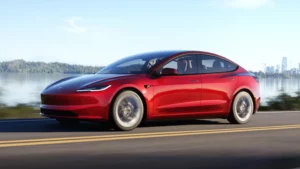Battery storage plants will be given UK government subsidies to provide electricity when supplies run low in a breakthrough for a technology considered crucial to the transition from fossil fuels to renewable energy.
Interesting article in the FT this week about the spread of Battery Storage as ways to balancing demand and supply. Several new battery storage facilities, which absorb surplus electricity at times of excess generation and release it when demand increases, won contracts with National Grid, the UK power system operator, in its latest auction of subsidies for back-up capacity.
The 500 megawatts of new storage projects procured in the auction — equivalent to a medium-sized thermal power station — is by far the biggest uptake of battery technology so far by National Grid and highlights the rapid change under way in Britain’s energy sector.
The ability to store electricity is seen as critical to helping balance supply and demand in the power system as reliable but dirty fossil fuels are gradually replaced with clean but volatile wind and solar generation.
High costs have so far limited the use of batteries but their success in the UK “capacity auction” — in which different forms of capacity compete to provide electricity at the lowest price — showed how the economics of storage are improving as battery technology matures.
The auction, designed to incentivise investment in new capacity and keep existing power stations in service, secured 52.4 gigawatts of power guaranteed for delivery in the winter of 2020-21.
Storage solutions could help green energy pose a competitive threat to conventional power stations
Winning bidders included a 49MW battery storage facility — one of the biggest of its kind in the world — to be built by Centrica, the UK energy group, at a former coal and gas-fired power station at Roosecote near Barrow in Cumbria.
Centrica also won backing for a new 370MW combined cycle gas turbine at King’s Lynn in Norfolk. But this was one of only two large new gas plants to win contracts despite government efforts to tilt the rules of the auction in favour of such facilities.
Ministers want more gas-fired capacity to fill the gap created by the phasing out of much dirtier coal-fired generation by 2025. However, it is proving difficult to secure investment because the falling cost and increasing availability of renewable power means gas plants risk being left idle when wind and solar generation is at high levels.
“Overall we believe the auction will largely be viewed as a disappointment by the UK government in terms of securing the significant levels of new gas generation capacity they hoped for in order to ensure security of supply,” said analysts at Barclays.
A subsidy of between £35 and £45 per kilowatt would have been needed to incentivise more large gas plants, compared with the £22.50 at which National Grid secured the capacity it wanted, according to Barclays.
Most of the winning bids came from existing gas, coal and nuclear plants, as well as interconnectors importing power from continental Europe and Ireland. But some new capacity was secured from small-scale generating facilities and “demand-side response” agreements with businesses to cut electricity use at times of tight supply.
Simon Virley, head of power and utilities at KPMG, the consultancy, said the auction shed light on the changing nature of Britain’s electricity system. “What is notable . . . is the diversity of technologies involved: with growing amounts of storage and demand side response, alongside small and large scale generation and interconnection.”
Environmental groups broadly welcomed the shift towards battery storage and the absence of further large amounts of polluting diesel-generating capacity which had done well in previous auctions.
The Department for Business, Energy and Industrial Strategy said it was happy with an outcome which it said had delivered a diverse range of capacity at an affordable cost for consumers.




